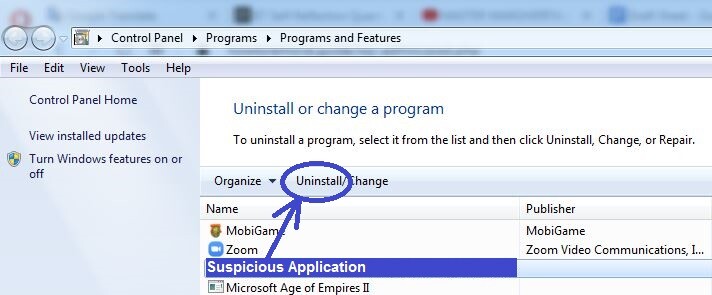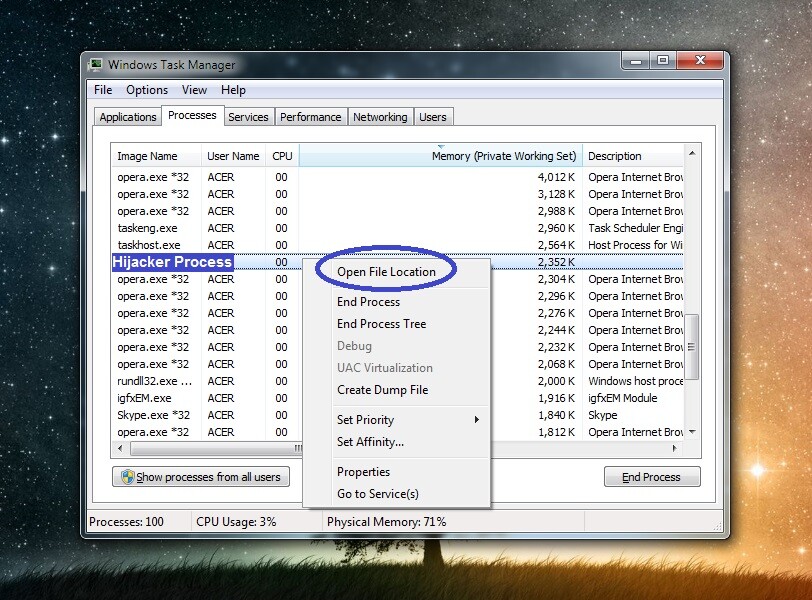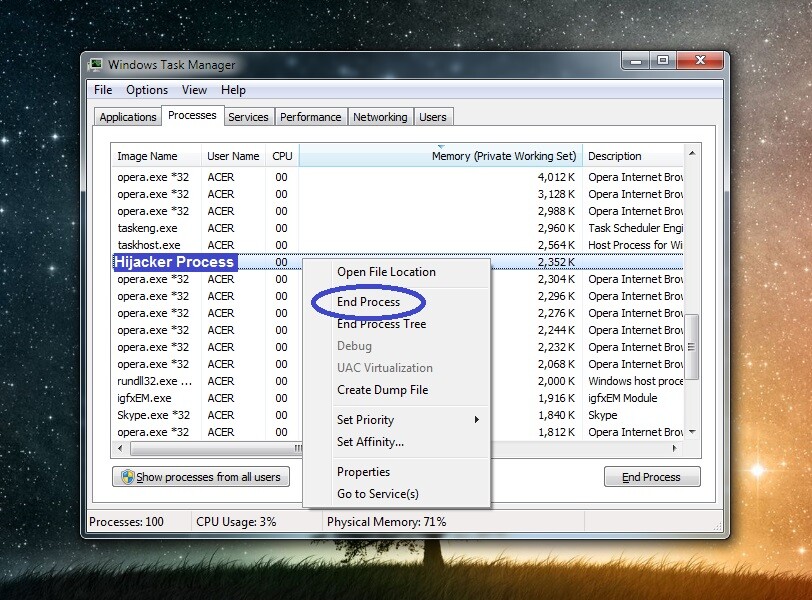
*Source of claim SH can remove it.
Obz
Obz is a dangerous malware variant that is categorized as ransomware. Obz can infect pretty much all operating systems and encrypt the files stored on its victims’ computers.

Ransomware-based viruses are terrible computer infections that are typically used for blackmail purposes. On this page, we will be focusing on a recently reported threat called Obz, which belongs to the cryptovirus subcategory. This particular infection has the ability to secretly encrypt the files, stored on the compromised computer, and ask a ransom for their decryption in the form of Bitcoin payment.
The Obz virus
One of the main things that makes the Obz virus so devastating is the fact that in nearly all the cases of infection, users are unable to detect and stop the malware’s activity before it completes its agenda. This is because, typically, the encryption process of the Obz virus isn’t really detected as malicious by most security programs.
Obz doesn’t corrupt files, it doesn’t delete anything or damage the OS. Therefore, a lot of antivirus tools may not detect the ongoing encryption process as something dangerous. Unfortunately, this allows the ransomware virus to carry on with its secret file encryption task without being interrupted and once this process is over, it automatically generates a ransom-demanding message on the victim’s screen.
If you have had the misfortune to have your personal data encrypted by Obz, then you most probably are more than interested to learn how to remove the ransomware from your PC and how to reverse the consequences of its attack. This, however, is not an easy task.
The Obz file encryption
According to the hackers behind the Obz file encryption, you have to pay a fixed amount of money to their cryptocurreny wallet. In exchange, they promise to provide you with the tools necessary to undo the Obz file encryption.
Namely, they promise to send you a special decryption key, which can bring things back to normal if you fulfill all of their ransom demands.
However, here we must mention that there are absolutely no guarantees about the future of your computer and your data because the crooks may simply vanish with the money and never send anything back. That’s why, when it comes to ransomware threats, one could never trust the criminals and expect to restore the sealed files with their help. Most security researchers, including our “How to remove” team, advise the victims to seek alternative methods for handling such an infection and look for legitimate solutions where they will not get fooled.
In fact, in the next paragraphs, we can offer one such alternative – a detailed removal guide with instructions on how to remove Obz from your PC and some file-recovery suggestions, which may be worth your attention. Unfortunately, we can’t promise that the instructions below will help everyone, as each and every ransomware case is very individual and the effects of its attack may vary. Moreover, Obz is one of the latest representatives, which comes with some advanced capabilities that may be difficult to overcome. Yet, we believe that it is worth it to give a try to the suggested methods and most importantly, to remove the cryptovirus from the computer in a fast and reliable manner. This way you can safely continue to use your machine and even connect backup sources that can help you recover some of your files.
SUMMARY:
*Source of claim SH can remove it.
Before you start
Here are several important things to consider before you begin the guide:
- Firstly, we recommend disconnecting all external devices that have storage memory of their own, since the virus may attempt to encrypt any data stored on them.
- Secondly, it is also recommended that you disconnect from the Internet while completing the steps – this could prevent the virus from communicating with the hacker’s servers and make its more manageable.
- Thirdly, it is important to have already decided how you’d attempt to recover the files locked by the virus. If you are thinking about paying the ransom (which we do not recommend), you should probably not delete Obz before you make the payment because this may make it impossible for you to get the decryption key.
- Lastly, it is highly possible that the Ransomware has automatically deleted itself to prevent you from gaining access to information that may help with the decryption. If there don’t seem to be traces of the virus on your computer, you should directly go to our file-recovery guide linked at the end of the current post.
With those considerations out of the way, let us begin with the removal process.
Remove Obz Ransomware
To remove Obz, it is important to eliminate programs installed on your PC that may be related to it and to quit any malware processes.
- Search the Programs and Features list for anything that seems linked to the virus and uninstall it.
- See what processes are in your Task Manager and quit the ones you deem harmful.
- Go to the System Registry, the Startup items list, and the Hosts file and make sure that any changes made to them by the virus are revoked.
- Lastly, in order to fully remove Obz, clean the following folders from harmful data: ProgramData, AppData, Temp, LocalAppData, and WinDir.
If this short description of the removal steps isn’t enough, you can find a more in-depth guide down below.
Detailed Guide

You can see all the programs installed on your PC by opening the Start menu and going to Control Panel > Uninstall a Program (search for the Control Panel using the Start menu search bar if its icon/tile isn’t shown in the Start Menu).
If a rogue program is what got you infected with Obz, then that program should be shown in the list and its installation date would likely be just before the Ransomware made its presence in your system known. If there’s a program added around that time that you think could be a threat, select it, then click Uninstall, follow whatever steps are shown in the uninstallation manager, and complete the program removal while making sure that the uninstaller doesn’t allow for any data related to that program to be kept on your PC.


WARNING! READ CAREFULLY BEFORE PROCEEDING!
*Source of claim SH can remove it.
Next, press Ctrl + Shift + Esc, click on Processes, and search the list for anything rogue that may be from Obz.
It is likely that the Ransomware process would no longer be active, but it is still important to be sure of that. If there are any Obz processes still running in the system, they will probably have high CPU and memory consumption, so sort the list of processes by order of the amount they consume of either resource and then look at the most resource-hungry entries.
If you see anything that could be related to Obz (you have to use your own personal judgement here), see if you can find any relevant information about that process on the Internet. If the process is truly harmful, it won’t be long before you find posts and articles from security forums that confirm it.
If it turns out that the suspected process may indeed be a threat, quickly right-click it and Open its File Location. Then use the anti-malware scanner we’ve provided below (it is free on our site and can be used directly from the browser) to scan the files in the location folder for malware.


If anything is detected as a threat, first quit the malicious process (right-click > End Process) and then delete as many files as you can (as you are allowed to) from the location folder. Once all of the other steps have been completed, it is important to remember to go back to the folder of the process and delete it along with whatever files may be left in it.


The next step is to enter Safe Mode – hopefully this will stop Obz (or any other hidden threats that may be in your system) from running any processes that may prevent you from cleaning your PC.

*Source of claim SH can remove it.
In this step, the first thing you must do is type Folder Options in the Start Menu, hit Enter, select the View tab in the window that opens, and put a tick in the checkbox next to Show Hidden files, folders, and drives. Also, you must remove the ticks next to Hide extensions for known file types and Hide empty drives in the Computer folder.
Once you’ve done this, your next task is to place the next lines in the search field in the Start Menu and to hit Enter after each in order to open the folder that they correspond to.
- %AppData%
- %LocalAppData%
- %ProgramData%
- %WinDir%
- %Temp%
In each folder except Temp, delete only the files created after your PC got infected. When you go to the Temp folder, simply delete all data stored in it.

Next, open the Start Menu yet again, type msconfig, and open the app that shows up in the results. Then select Startup and uncheck everything listed there that is unfamiliar to you or that has an unknown developer (as shown in the list). After that, save the changes by clicking OK.
Now go to the following folder and open the file labelled Hosts: Computer > (C:) > Windows > System32 > drivers > etc. You will have to pick a program with which to open it – click on the Notepad icon. In the Hosts file, copy anything that may be written under the last “Localhost” word and post it in the comments. Once we see your comment, we will reply to it, telling you if you should make any changes to the Hosts file.


Open the computer’s Registry Editor by typing regedit in the Start Menu and selecting the first app that comes up. You will need to give your permission to that app to make system changes, so click on Yes in the next window.
Once you get to the Registry Editor, select the Find option from its Edit menu and search for Obz. Delete the items that get found and search again after every deletion until there are no more related results.

Finally, visit the following Registry folders by manually navigating to them:
- HKEY_CURRENT_USER > Software
- HKEY_CURRENT_USER > Software > Microsoft > Windows > CurrentVersion > Run
- HKEY_CURRENT_USER > Software > Microsoft > Internet Explorer > Main
In them, if you see anything that seems to have a randomly-generated name (for instance “t89g43fh98h98t4ufj898543u489urj0f98“), delete it. If you don’t know if a certain suspicious-looking item must be deleted, ask us about it through the comments section.
If the manual steps didn’t help
Finally, if nothing this far has worked, it might be time to resort to the help of a specialist in your area or to install a specialized anti-malware tool on your computer that can take care of the infection for you. It’s important to note here that many Ransomware threats come together and are helped by Rootkits, Trojans, and other forms of malware, so it is not excluded that there may be additional malicious programs on your computer at the moment that are helping Obz remain active. If that’s the case, the need for a reliable security tool would be even greater. The good news is that the malware-removal program we’ve linked here is very good at dealing with all sorts of threats and should be able to clean your computer in no time, so we strongly recommend using it.
How to Decrypt Obz files
To decrypt Obz files, you are advised to try the available alternative recovery methods rather than opting for the ransom payment. Before you try to decrypt Obz files with such methods, however, it is important to have already removed the virus.
If there’s still data on your machine that seems suspicious, don’t forget about the powerful anti-malware scanner that we have on our site and that you can use for free at any time. As for the data recovery, once you have made sure that your PC is clean, we recommend visiting the How to Decrypt Ransomware article (+guide) we have prepared for users seeking to free their Ransomware-encrypted files without paying a ransom.

Leave a Reply